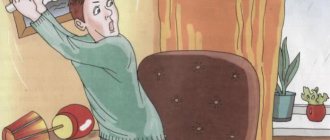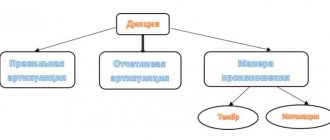Unfortunately, speech impediment is very common these days. The fact is that in childhood many people show a tendency to, so to speak, swallow letters and sounds. Parents usually think that this is a temporary phenomenon and will go away with age. Yes, of course, there are rare cases when this happened this way, of course, but in the majority, people become adults, mature people, and are not free to clearly pronounce the letter R.
How to learn to pronounce the letter r
Everything, as everywhere else, a child’s body is easier to re-educate reflexes, treat any diseases, and thinking, in general, is quite flexible than an adult. With favorable development, the baby tries to pronounce individual syllables and sentences as early as one year, but according to human nature, this is a very early time. It is for this reason that in youth it is necessary to pay special attention to whether the child confuses letters or whether there are any other defects. And the most difficult thing is the pronunciation of “R”.
Parents should understand that often the cause is the shape of the tongue, a small frenulum, weak muscles around the mouth, all of which cause complications with various sounds. It also happens that the position of the teeth affects the pronunciation, here you need the help of a doctor who will recommend a special plate for a while. If you do not deal with this problem at a young age, it will be extremely problematic to solve it as an adult. To eliminate burr, you need to know the cause, and only then fight it. This is usually done by a speech therapist; he will help parents improve their child’s speech without surgical intervention.
Causes of speech impairment
Burr can be caused by a variety of reasons. This can lead to:
- physical or neurological weakness (occurs with chronic diseases);
- parents do not correct the child’s speech when there are mistakes in it or the child pronounces some sounds incorrectly;
- the child hears incorrect speech from adults and copies it;
- phonetic hearing and sound recognition are not sufficiently developed;
- incorrect articulation;
- pathology of the articulatory apparatus.
Burrs can occur after injuries. This is the main reason for the appearance of such a defect in adults. In some cases, correction of burr in adults cannot be carried out without the help of other specialists.
How can an adult learn to pronounce the letter r?
The ability not to pronounce the letter P is called burr and brings a lot of inconvenience to both children and adults. Complexes are formed, and, unfortunately, it is impossible to master some professions with a burr. Children are more likely to correct this after visiting a speech therapist, but the question is what to do as an adult. As a person gets older, more work is required to establish correct pronunciation.
The speech apparatus and muscles of an adult are accustomed to a certain pronunciation. Relearning requires a lot of effort and time. But nothing is impossible, what is important is the desire for the best and patience when faced with difficulties. Recognizing the problem is the first step towards solving it, take the following recommendations into account:
- Find some tongue twisters on the Internet. It’s not for nothing that young children are forced to pronounce them in childhood; they train the articulatory apparatus, helping to pronounce sounds. Select about five tongue twisters with frequent use of letters.
- Never avoid words that contain sounds that are difficult for you. You need to fight your complexes, work on your attitude towards the defect. You can hide the pronunciation, but at the same time you will deepen the problem even further into your head.
- Place a mirror in front of you, pronouncing the combinations “la”, “ta”, look at the position of your tongue and lips.
Types of burr
There are different types of rotacism. Depending on its etiology, there are two types:
- Velar. The vibration occurs at the edge of the soft palate.
- Uvular rotacism. The vibration occurs on the small uvula of the soft palate.
In a broad sense, there are several forms of burr (rhotacism):
- Simple or monomorphic. The pronunciation of one or more sounds of one group is impaired - “S Z C”, “ZH Sh Ch”.
- Polymorphic or complex. The articulation of phonemes from different groups is impaired.
- Physiological. Also called age-related. With it, sound pronunciation is impaired in children under five years of age, which is associated with insufficient development of articulatory organs.
- Functional. Rotacism develops in the absence of problems with the articulatory apparatus, central nervous system, hearing and other devices and systems.
- Mechanical or organic. The development of rhotacism is associated with congenital or acquired pathologies of the speech apparatus.
An accurate diagnosis can only be made by a speech therapist. The definition of burr determines the choice of methods for its correction.
Rotacisms
Correction of burr in adults and children depends on the form of rhotacism. They are as follows:
- There is no “R” in the speech (handle - uchka, river - eka);
- Velar rhotacism or soft pronunciation. The root of the tongue comes into contact with the soft palate, namely its lower edge. A stream of air passes through the gap between them during pronunciation, causing the palate to vibrate.
- Uvular rotacism. Often called "throat".
- Side. The vibration occurs on the side of the tongue, not on the tip. This is how a sound similar to “l” or “rl” appears.
- Bilabial. This type is also called labial, labial or bilabial. Distortion occurs when the lips vibrate, this is how it turns out “prr”. Speech therapists call this sound a coachman's sound.
- Interdental or interdental. Sound pronunciation is caused by the position of the tongue between the teeth.
- Single-strike or proto. Reminds me of “d”, it’s impossible to pronounce the long “RRRRRRRR”.
- Buccal. The exhaled air passes between the cheeks, which causes vibration.
- Nasal. The root is in contact with the soft palate, and air passes through the nose.
- replacing “P” hard with soft.
- Labiodental. The sound is formed between the lip and the upper teeth.
- Laryngeal or laryngeal.
Depending on the form of rotacism, certain exercises are selected aimed at correcting this phenomenon.
Pararotacisms
Pararotacism is the replacement of the rumbling “R” sound with a softer one. The main causes are paresis, short frenulum, impaired phonetic hearing and copying incorrect pronunciation from adults. With pararotacism, the following “P” substitutions occur:
- c: appears in the absence of vibration - “wuka - hand”;
- d: it turns out “hand - duka”;
- g: “hand – guka”;
- n: hand – puka;
- l: hand - bow;
- s: hand – yuka;
- y: hand – yuka.
Correction of pararotacism has many similar sections to burr. The most basic exercise for this is tongue twisters for burr.
Functional burr
Functional burr can develop in a child due to chronic diseases. Another common reason is pedagogical neglect - when a child is given insufficient time from parents and adults, the child develops slowly, not because he has problems with the intellect, but because no one works with him or they do not do it enough.
Often this phenomenon develops in children from bilingual families, that is, adults speak different languages, or from families where one or both parents have such problems. In this way, the child copies the pronunciation of adults. Also, this type of burr may appear due to the presence of disorders of the articulatory apparatus or underdeveloped phonetic hearing.
Organic burr
Occurs due to the structural features of the oral cavity - teeth, bite, tongue (frenulum). A child or adult may burr due to improper jaw structure or lack of teeth. In this case, it is impossible to get rid of rotacism without the help of dentists and an orthodontist. The organic form can appear during life as a result of trauma.
Sensory tongue-tiedness (dyslalia)
This speech disorder is also called tongue-tied or dyslalia. This consists of the inability to pronounce certain sounds or series of sounds. Tongue-tied sounds can be all vowels or all consonants. In the simplest cases, tongue-tiedness affects one or more. Such phonemes are sometimes dropped out or replaced by others. Tongue-tiedness can be called the most common speech defect in a child.
Functional tongue-tiedness is a consequence of improper speech development. It usually occurs at 3-4 years of age and can continue into preschool age. Cases of tongue-tiedness in adults are rare, but they do exist.
How to quickly learn to pronounce the letter r
Pronouncing the letter P correctly and fluently is a very difficult and common task. To work with a child, it will be easier for parents to help, but adults will have to solve this problem on their own. Follow these recommendations daily:
- Like children, it is advised to pronounce tongue twisters, with special emphasis given to words with frequent use of the letter R.
- A common mistake made in childhood is when air remains in the neck and is not released out. Meanwhile, the desired trembling of the end of the tongue occurs, which is a mandatory criterion when pronouncing the sounds “R”. To eliminate the flaw, smile, raising your tongue to the palate, releasing air, open your mouth.
- To improve the mobility of the tip, also tighten your mouth in a smile, release your tongue, and lightly bite its tip. Do this exercise for ten seconds, then rest, and repeat again. This warm-up must be repeated four times a week, a day, and in general, the more often, the better.
Studying sayings and tongue twisters
To learn and consolidate the skill of pronunciation of the grazing sound “R”, it is good to use sayings and tongue twisters in French. Finding them is not difficult; there are a huge number of them on the Internet.
Having chosen short and simple expressions to begin with, you can begin to pronounce them. Before doing this, it is better to listen to how the French themselves do it. Over time, you can move on to longer and more complex phrases. For example, you can take the following tongue twister:
"Rat vit riz Rat mit patte à ras Rat mit patte à riz Riz ciut patte à rat."
You can also use this example of a saying:
"Dans la gendarmerie, quand un gendarme rit, tous les gendarmes rient dans la gendarmerie."
You can also find out how to pronounce these expressions on the global network. If a person can master the correct pronunciation of tongue twisters and sayings, then all the work was not in vain. After all, their reproduction is not so simple.
How to learn to pronounce the letter r at home
One of the reasons for this defect is the short frenulum of the inner tongue. To give elasticity, you need to open your mouth, stretch out your tongue, try to reach your chin, or the tip of your nose. This exercise is best done at home, so that no one distracts you. For homework on a problem, a suitable way to record yourself on a voice recorder is suitable. By listening to how you pronounce, for example, a tongue twister, you can identify what kind of origin the error has. Recording yourself will help detect even small deviations from the speech standard.
Exercises for pronunciation of the letter r
Developing its clear reproduction in a short time is a very difficult goal, but with the help of some speech therapy exercises it is possible. The letter R is the most difficult in Russian speech. To speak well, you need well-developed muscles of the speech apparatus, good amplitude, and other physiological developments.
- The first step to develop the speech apparatus is to open your mouth and stick out the tip of your tongue, leave it on your front teeth in this position for twenty seconds. This is a kind of stretching of the hypoglossal ligament, muscle relaxation.
- Now also, open your mouth wider, forcefully touch the tubercles of your front teeth, at the same time, pronounce the sound “D”. The time is similar, about fifteen to twenty seconds.
- Make clicking sounds with your tongue, as if riding a horse, this stretches the ligaments.
- And count all the teeth with your tongue, sticking your tongue in and out of your mouth.
- Stick your tongue out halfway, beyond the teeth, play a drawn-out “z-z-z” sound, then move it back, resting on the roof of your mouth, repeat the sound.
- Press your tongue tightly against the roof of your mouth, as if you were about to say “ny”, open your mouth wide, then close it. Repeat this action twenty times.
These recommendations are suitable for working with children and adults. If you are concerned about your baby's speech development, listen to his pronunciation without delaying work on it. Well, if you are already a mature adult, burring can be corrected, just be persistent in your actions, repeat the exercises as often as possible and the goal will definitely be achieved.











